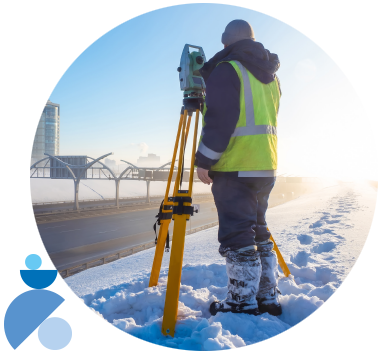Parametric insurance
Parametric insurance: Expanding the options for risk management
Big data has driven parametric insurance’s evolution as a viable means of protection for many risks, bringing this not-so-newconcept into the spotlight.
By Jonathan Charak, Emerging Solutions Director, Zurich North America
Parametric insurance is a “new” type of protection that is not really new, but represents an exciting innovation for the industry.
Though it has been around since the 1990s (albeit in a limited role), it remains unfamiliar to many. Now add its expanding applications (thanks, big data), and parametric insurance has become a shiny new object in the insurance universe. And it’s one very much worth exploring.
What is parametric insurance? For the uninitiated, its name can help define it. Parametric insurance sets parameters around a specific set of metrics. A parametric policy establishes predetermined parameters and payments — agreed upon by both insurer and customer — for risks that can be objectively measured and verified by a respected third-party authority. Three examples: A Category 3 hurricane, 10 inches of rainfall across a certain number of days, and 200,000 unfavorable social media posts (I’ll get to that one later). Once the agreed-upon measurement is confirmed and “triggered,” and the customer can attest or show losses from that trigger, the claim is paid. The advantages are obvious: No lengthy claims settlement process. Quick payment. Cash flow to help a customer get back to business.
What’s so promising about parametric insurance is that it can fill some protection gaps that traditional policies can’t, casting a wider potential solutions net over some risks that might have otherwise been considered “uninsurable.” Parametric insurance also allows insurers to provide coverage for economic losses from a triggering event, sometimes called Non-Damage Business Interruption.
Ultimately, what makes this solution work as insurance is the relative uncertainty of the relevant trigger. For example, the insurer can’t control the arrival of a Category 3 hurricane any more than a customer can.
Examples of parametric insurance
Before I dig deeper into how parametric insurance works, let me share an example to demonstrate how it differs from traditional insurance.
Consider a general contractor constructing a building. Wind, rain, severe cold or heat may not inflict property damage per se,but they sure could sideline a crew.This, in turn, would cause financial hardship for the contractor because work stoppage can lead to expenses for various reasons: extended payroll costs, liquidated damages, fines for missed project deadlines, the need to rent additional equipment, etc. These items would fall under the concept of non-damage business interruption, giving rise to financial losses that are typically not covered by traditional property insurance. The contractor could, however, be covered if they had contracted Zurich’s Construction Weather Parametric Insurance policy, covering the agreed-upon risks.
Three major benefits of parametric insurance
Parametric policies can offer many benefits, but I want to mention three important ones:
- Replaces subjectivity with objectivity: The agreed-upon parametric trigger — e.g., it’s either a Category 3 hurricane or it’s not — brings an objective and independent measure to the insurance process. The event that triggers the payout and the mechanism used for payouts determine what will be paid to the customer, which is a clearer predetermined amount than with traditional solutions, where a claims adjuster needs to assess and determine damages.
- Quick claims processing: Because the claims payouts are agreed upon ahead of time, the customer is typically paid in days or weeks, not months. Getting reimbursed sooner allows the insured to improve their liquidity and apply the funds to the post-event emergency costs, restoring their business operations sooner.
- Provides a potential solution for climate resilience: As extreme weather events occur with greater frequency and impact, many businesses can use parametric insurance to help address these challenges. The National Oceanic and Atmospheric listed 22 weather/ climate disaster events in the U.S. in 2020 with losses exceeding $1 billion each, including 13 severe storms, seven tropical cyclones, one drought event and one wildfire. By contrast, the annual average between 1980 and 2020 was seven events.1 And it doesn’t take a billion-dollar event to wreak havoc. As the frequency and severity of volatile weather events continue to grow, it’s harder to rely on historical weather data alone to predict future conditions. Weather parametric insurance can help.
Parametric possibilities continue to expand
Parametric insurance can cover a broad spectrum of risks if they can be objectively measured. As data analytics continues to expand, metrics for a growing number of risks will be available. The World Economic Forum estimates that by 2025, 463 exabytes of data will be created each day globally. That’s the equivalent of nearly 212.8 million DVDs per day.2 Consider these relatively new approaches to parametric insurance:
- “Disgrace parametric insurance” from a company called SpottedRisk was featured in Insurance Journal. SpottedRisk uses its predictive analytics database to objectively assess a scandal and related risks involving individual celebrities and how much negative publicity — such as the social-media metrics example I used earlier — might cost a company that hires them. If the damage is great enough, the company may need to pull out of a contract or cancel a production, both potentially expensive situations.3
- Ecological parametric insurance was recently purchased by a consortium of public, private and nonprofit organizations to help protect the coral reefs and beaches of Quintana Roo, Mexico, in the event of a hurricane damaging its coastal areas. The reefs help prevent beach erosion and are critical to the state’s tourism sector.4
- Parametric policies for agriculture have long been a part of the Federal Crop Insurance Program and continue to be developed. Zurich’s crop insurance business, which administers insurance products developed and regulated by the U.S. Department of Agriculture’s Risk Management Agency, writes several federal parametric crop insurance policies, such as Dairy Revenue Protection, Margin Protection, Area Risk Protection and Rainfall Index. To illustrate, Rainfall Index insurance is available for apiculture, pasture, rangeland and forage. It was introduced in 2006 and uses NOAA Climate Prediction Center data, which utilizes a grid system to determine precipitation amounts within an area. The insurance is designed to help protect a producer’s operation from the risks of loss due to the lack of precipitation. (It is not designed to insure against ongoing or severe drought, as the coverage is based on precipitation expected during specific intervals only.)
- In the wake of COVID-19, the call for pandemic solutions for businesses has led Zurich North America to propose a parametric-based, public/private partnership to be undertaken by the federal government and the insurance industry. The triggers for the program would include federal and state emergency disaster declarations and business shut-down declarations at the state level.
- Parametrix, a United Kingdom-based company, has introduced a parametric insurance model to technology-dependent businesses. The index-based coverage pays out automatically when service goes down under certain parameters. Covered are cloud outages, network failures, third-party system crashes and other hazards that can cause IT service downtime. Parametrix was one of eight finalists in the 2020 Zurich Innovation Championship.

Digging deeper into parametric insurance
Some misconceptions continue to surround parametric insurance. Let’s review some important factors about these policies:
- Customers still need to prove loss. Parametric insurance should not be confused with a financial derivative, where an investor puts money against a metric like weather. In the U.S., one way that we ensure that this is insurance (as opposed to a financial market wager) is that there needs to be an attestation of loss. A general contractor on a construction project, for example, would have to show that their crew was not able to work. Defining this as an insurance proposition — as opposed to a derivative — may benefit the customer from a tax perspective.
- Customers cannot receive payouts larger than the actual loss. Insurers cannot over-indemnify a customer. In other words, the customer must establish their costs and expenses relating to the risk they’re insuring against, which would be the maximum the customer can be insured for. Underwriters would then work with customers to identify the proper trigger level and deductible layer (i.e., the level of the trigger, the number of days of an event occurring, and on what day the customer chooses the trigger to take effect), as well as the amount of indemnity the insurance would provide.
- Parametric insurance is not necessarily more expensive than traditional insurance. The price of parametric insurance would depend on the subject of the insurance, and how the policy is structured. For instance, building in more deductible days will lower the cost of the insurance, but that might not give you the protection you need. If you’re insuring against a hurricane, for example, the sustained wind speed you ultimately choose as the trigger will affect the premium. That’s why it’s important for customers to work with their insurance distributor and carriers to help determine the best parameters for their business and their risk.
- Parametric insurance doesn’t replace traditional insurance. Instead, it complements traditional insurance and can be part of a well thought-out and sound risk management strategy. Because it can expand coverage by addressing broader categories of risk, parametric insurance can supplement traditional insurance. For example, a business could purchase $10 million in a catastrophic loss parametric policy and $90 million in traditional property insurance coverage.
- Although parametric insurance is a novel type of insurance, expect the newness to wear off soon as its applications grow. The burgeoning role of data analytics and the influx of insurtechs seeking ways to put that data to work for customers will continue to expand the reach and possibilities of parametric insurance.
- “Billion-Dollar Weather and Climate Disasters: Overview.” National Oceanic and Atmospheric Administration. 8 January 2021.
- Desjardins, Jeff. “How Much Data is Generated Each Day?” World Economic Forum. 17 April 2019.
- Simpson, Andrew G. “The Remaking of Disgrace Insurance.” Insurance Journal. 10 September 2019.
- Gonzalez, Gloria. “Parametric Insurance Policy to Cover Mexico Coral Reef.” Business Insurance. 7 June 2019.

_____________
12 PROGRAM LEADER